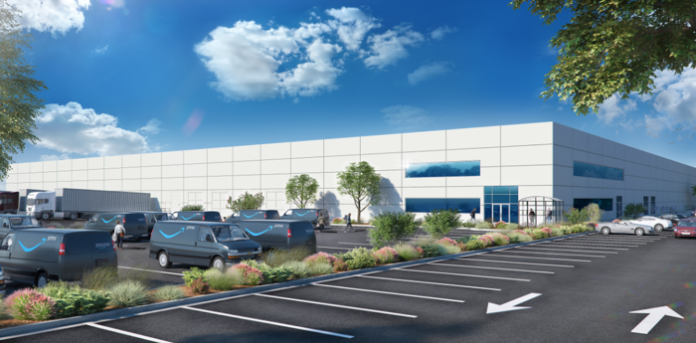Last week’s vote by the City of Cypress to welcome Amazon to the neighborhood produced some surprises and perhaps gave the community a glimpse at how drastically the economic environment has been changed by ecommerce and amplified by COVID.
Cypress has enjoyed a plethora of major brands who have located there since its founding in 1956 as the city’s economy has followed America’s transition over the past seven decades.
Amazon, a tiny upstart that has become the world’s first ubiquitous brand, will replace Mitsubishi on a premier 22.3-acre site in Cypress.
In the case of Mitsubishi, a combination of factors prompted the move. Although they cited the state’s high costs, other factors obviously played a role in their departure.
Among them, and likely a strong influence, is the fact that Tennessee has somewhat become the southern U.S. auto headquarters, where Nissan, who now owns more than a third of Mitsubishi, is constructing an $800 million manufacturing plant.
Nevertheless, now that Mitsubishi has taken its 200 jobs to Nashville, is Cypress now in a better or worse position with Amazon? That was largely what the multi-month debate centered around.
To their credit, Cypress and its staff began an extensive investigation that produced much needed data and a foundation of facts upon which a decision could be made. In fact, the case presented was apparently strong enough to prompt some activists initially against the proposal to flip and support it.
Although the proposed Amazon last-mile facility “was a relatively new use” facility in the city zoning codes, and did not necessarily “fit” within any of its present zoning uses, Cypress city staff determined it was “eligible” because it complies with the Cypress Corporate Center Master Plan.
In doing so, however, Amazon has agreed to 130 “conditions” in the conditional use permit “CUP” the council approved. If violated, the CUP can be revoked, officials said.
For example, Amazon will be required to heavily invest in the former Mitsubishi 22.3-acre site, including refurbishing and bolstering the berm separating the site from existing neighborhoods. They must add additional trees throughout the site, including to the existing pine trees to the eastern edge, maintaining existing trees and shrubs along the western edge fence, etc.
Further, the permit requires strict aesthetic construction guidelines which call for the orderly destruction of some buildings on the site and requires a certain “look” of new structures on the site.
Amazon’s permit does not allow them to “provide delivery operations to other on-line shopping or delivery companies.”
The facility plans to operate 24 hours per day, seven days a week, expecting to have 190 total delivery vans “dispatched in 20-minute increments” between 9 – 11 a.m.
In addition, 18 line-haul trucks will deliver packages from the Inland Empire to the Cypress last-mile facility “generally between 5-8:00 a.m. Approximately 280 additional delivery vans depart between 7 -8 a.m.
Approximately 120 employees will arrive between 1:30 – 5:30 a.m. which “mitigates traffic during morning rush hour” while 55 afternoon employees will arrive between 11:30 a.m. and 1:30 p.m. to mitigate the afternoon traffic rush. The permit does allow for some deviation for special occasions like Amazon Prime Week and holidays.
Moreover, the permit requires Amazon to further reduce impacts by becoming the first ‘last-mile’ station to be facilitated with all electric vehicles.
“Amazon shall transition to an all-electric delivery fleet in the most expeditious manner possible and no later than December 31, 2025,” reads the permit, although it does provide allowances for exceptional circumstances.
The 180,000 square foot building closest to Katella will be maintained, but Amazon will not be allowed to occupy the building without altering its permit by reappearing before the council.
The permit literally cites hundreds of specifics, including such things as not allowing diesel trucks servicing the facility to idle “more than five minutes” and prohibiting deliveries from 10:00 p.m. to 5:00 a.m.
And while Mitsubishi went south with 200 jobs, an Economic Benefit Analysis estimates the Amazon project will ultimately support 1,030 jobs in the area, generating labor income of $58 million annually, with a “total annual regional economic output” of $136.7 million.
Moreover, the project will “provide a one-time contribution” of $350,000 to the city as a “contribution toward street and infrastructure maintenance” at the time of building permit issuance.
According to the city’s analysis, the project will also provide to the city’s Recreation and Parks District “an estimated $94,000” generated by off-site sales and property taxes.
Finally, under the CUP, “Amazon shall make good faith effort to include Cypress residents in the candidate pool for employment opportunities at the Cypress facility.”
Even before the pandemic, Amazon was among the most valuable companies in the world, having gambled on ecommerce decades before many others.
With the onset of the pandemic, life has evolved around ecommerce, making Amazon virtually ubiquitous.
Amazon, which is expected to globally deliver 3.5 billion packages this year, is working to transition its entire fleet to electric vehicles. Globally, Amazon has hired approximately 1,400 new employees per day since the pandemic began, the New York Times reported Saturday.
Time will tell the wisdom of welcoming Amazon to the neighborhood, but with ecommerce as the wave of the future, at the very least Cypress has secured itself a major role in it.
Editor’s Note: While this story includes some of the concessions and economic impacts of the Amazon proposal in Cypress, it does include them all. For interested readers, the entire document can be viewed at cypressca.org.

